Sandwiched between China and India, Bhutan is a rare pearl in the Himalayas, its dazzling beauty preserved by centuries of isolation. It is a country where Gross National Happiness is higher than GDP, and where the environment is protected by law. We invite you to discover some of the wonders of this fascinating land.
1. Thimphu, the capital without traffic lights
Thimphu, the capital of Bhutan, is a fascinating blend of tradition and modernity. It is a city that, despite its modern touches, has managed to preserve its cultural and historical charm. Nestled in the Thimphu Valley, surrounded by majestic mountains and crossed by the Wang Chu River, this city offers a unique experience to visitors.
One of Thimphu's special features is that it is the only capital city in the world without traffic lights. Instead, traffic policemen in traditional uniforms manage the flow of cars and pedestrians with elegant, rhythmic dance movements. It's a picturesque scene that captures the essence of Bhutan: a harmonious blend of the old and the new.
Thimphu is home to many historical and cultural sites. The Tashichho Dzong, an impressive fortress that serves as the seat of government and the summer residence of Bhutan's spiritual leader, Je Khenpo, is a must-see. Another major point of interest is the Memorial Chorten, a stupa built in memory of Bhutan's third king, which is a centre of devotion for many Bhutanese.
The town is also known for its weekend market, where locals come to sell or buy a variety of products, from fresh fruit and vegetables to traditional textiles and handicrafts. This is an excellent opportunity for visitors to mingle with the local population and purchase authentic Bhutanese products.
Thimphu is also the centre of education and culture in Bhutan, with several schools and colleges, as well as the country's only arts and crafts institute, where students learn the thirteen traditional arts and crafts of Bhutan.
Thimphu, with its blend of old and new, sacred and secular, offers visitors a unique insight into Bhutan's culture and history, while providing a glimpse into the path the country has chosen to modernise while preserving its unique heritage.
2. The Tiger's Nest Monastery
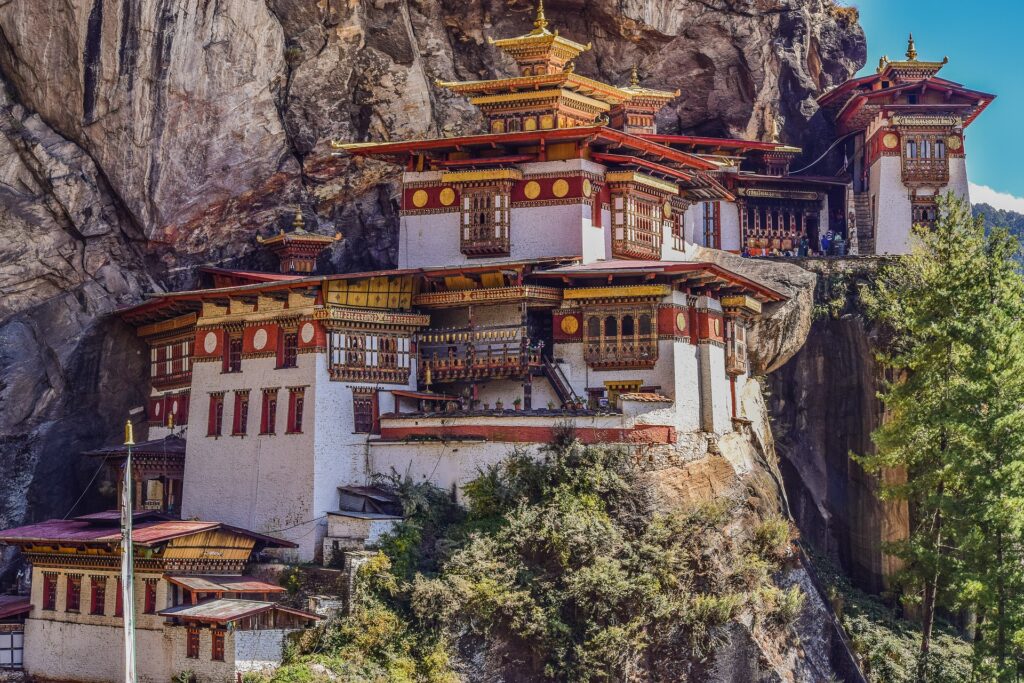
Taktshang Goemba, more commonly known as the Tiger's Nest, is arguably one of Bhutan's most impressive wonders. Located about 10 kilometres north of Paro, this sacred Buddhist monastery seems to defy gravity, clinging to a sheer cliff 900 metres above the valley. The view from this suspended sanctuary is simply breathtaking, both in its beauty and in the architectural feat it represents. Accessible only on foot or by mule, the winding path to the monastery is an adventure in itself. Hikers are rewarded with spectacular views of the Paro Valley and surrounding mountains. The Tiger's Nest takes its name from a legend that Padmasambhava, also known as Guru Rinpoche and considered the second Buddha, flew to this place on the back of a tigress to meditate in a cave. Today, this cave is part of the monastery complex. The interior of the Tiger's Nest is equally fascinating. The prayer halls with their colourful murals and golden statues of Buddhist deities evoke a sense of peace and serenity. Whether one is a dedicated pilgrim or a traveller seeking natural and architectural beauty, a visit to the Tiger's Nest is an unforgettable experience that offers a glimpse into the cultural and spiritual richness of Bhutan.
3. The dzongs of Bhutan
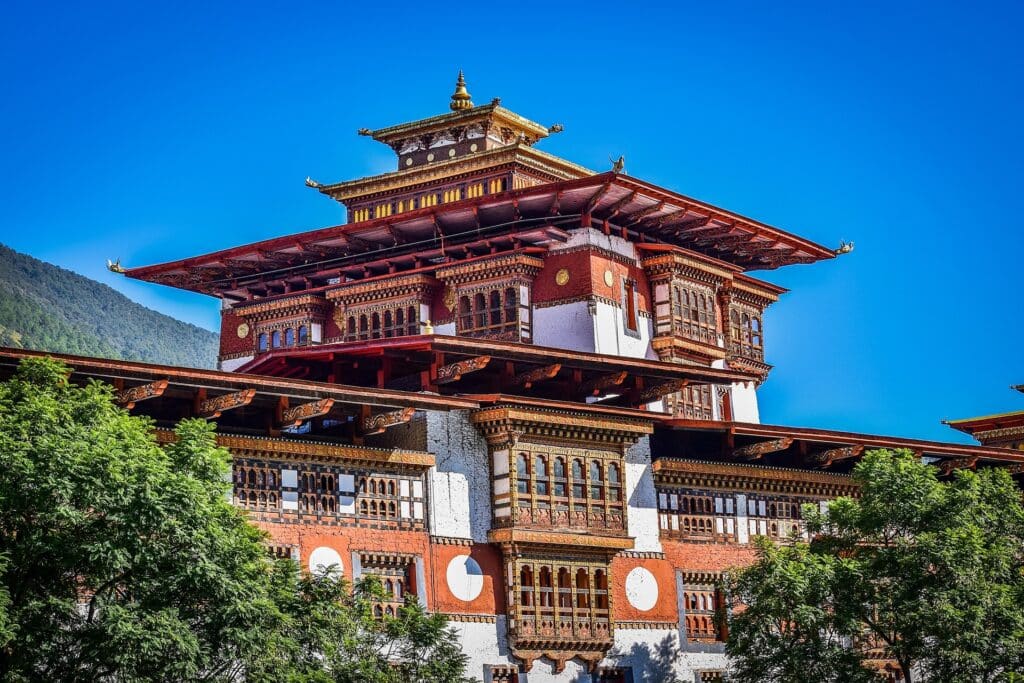
Bhutan's dzongs are monastic fortresses that are remarkable expressions of traditional Bhutanese architecture. These imposing structures are administrative and religious centres, and their whitewashed walls, finely crafted wooden roofs and colourful details are an integral part of the Bhutanese landscape. Each dzong is unique, but all are built without plans or designs, using traditional methods handed down from generation to generation. Inside, these fortresses are filled with tranquil courtyards, temples and administrative offices, all arranged according to a precise plan that reflects the harmony of Tantric Buddhism.
Of these dzongs, Punakha Dzong is particularly impressive. Located at the confluence of the Pho and Mo rivers, this dzong is often considered the most beautiful in Bhutan. Built in the 17th century, it is the second oldest and second largest dzong in the country. It was the seat of government until the late 19th century and continues to be the winter seat of Je Khenpo, the religious leader of Bhutan. Its historical importance is also significant, as it has been the coronation place of all the kings of Bhutan.
By exploring these dzongs, visitors can get a glimpse of monastic life, observe monks in their prayers and philosophical debates, and admire the beautiful thangkas (Buddhist paintings on canvas) and statues. The dzongs, with their fusion of religious, historical and architectural significance, offer a unique window into the soul of Bhutan.
4. The Phobjikha Valley
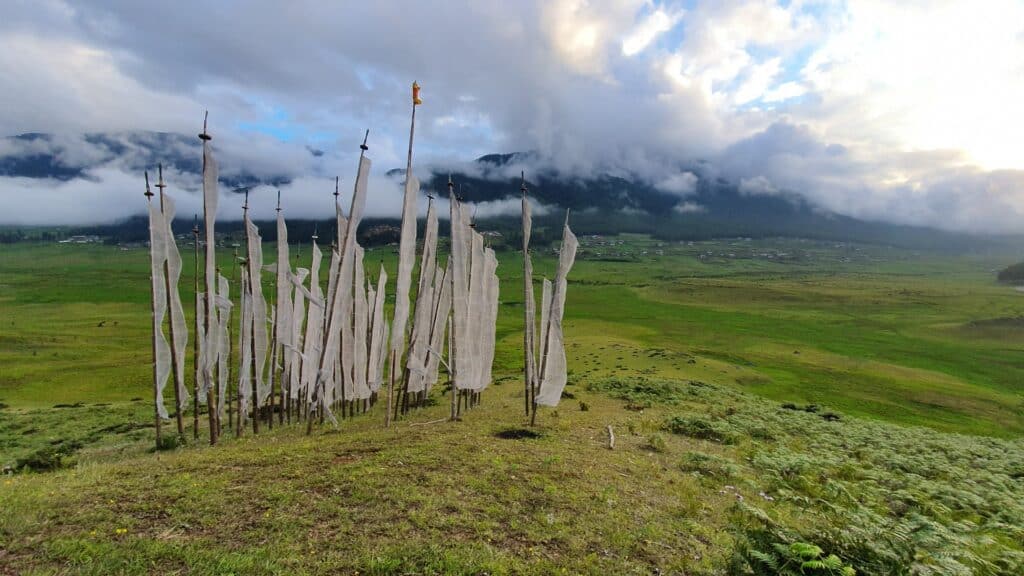
The Phobjikha Valley, also known as the Gangtey Valley, is a vast glacial depression in the central Himalayas of Bhutan. This valley is famous for its tranquil natural beauty and vast rolling landscapes, dotted with picturesque farmhouses and pine forests. It is a place of peace and serenity, where the silence is interrupted only by the wind in the trees and the singing of birds.
One of the most remarkable aspects of the Phobjikha Valley is that it serves as a winter home for the rare black-necked cranes. Every year, from late October to February, these magnificent birds migrate from Tibet to this valley, offering an impressive natural spectacle. The dance of these cranes is a sight to behold, their graceful and coordinated movements a true natural ballet.
In the heart of the valley lies the village of Gangtey, famous for its impressive 17th century monastery, Gangtey Goempa. The monastery is one of the most important centres of the Nyingma school of Buddhism in Bhutan and offers a panoramic view of the valley. Every year the monastery holds the Black-necked Crane Festival, which coincides with the arrival of cranes in the valley.
The Phobjikha Valley is also a popular hiking area. Trails wind through rhododendron forests, potato fields and pastures, offering breathtaking views of the valley and the chance to see local wildlife up close. Whether you are a nature lover, a birdwatcher or simply looking for a place to reconnect with nature, the Phobjikha Valley is a must-see destination when visiting Bhutan.
5. The Paro Tshechu Festival
The Paro Tshechu Festival is one of the most important and colourful cultural events in Bhutan. It is a Buddhist festival that takes place every year in the spring, usually in March or April, at Rinpung Dzong, a magnificent monastic fortress in the Paro Valley. The festival lasts several days and attracts thousands of participants, locals and tourists alike, who come to witness this major religious and social event.
At the Paro Tshechu festival, spectators can watch a series of ritual mask dances, known as cham, which are performed by monks and laypeople dressed in intricately embroidered costumes. These dances, which tell stories of the triumph of good over evil, are considered a form of meditation and a method of transmitting Buddhist teachings to the people. They are accompanied by traditional music played on ancient instruments such as long trumpets (dungchen), drums (nga), cymbals (rolmo) and bells (drilbu).
The highlight of the festival is the display of a huge thangka (a religious painting or embroidery), also called a thongdrel. This thangka, which depicts Guru Rinpoche (Padmasambhava), is unfurled before dawn on the last day of the festival, and it is said that simply by looking at it, one can be purified of one's sins.
The Paro Tshechu festival is not only a religious event, but also an opportunity for Bhutanese to celebrate their cultural heritage and strengthen the bonds of the community. People come dressed in their best traditional clothes, share food and stories, and enjoy the opportunity to laugh and have fun. Attending the Paro Tshechu Festival is an unforgettable experience that offers valuable insight into Bhutanese culture and spirituality.

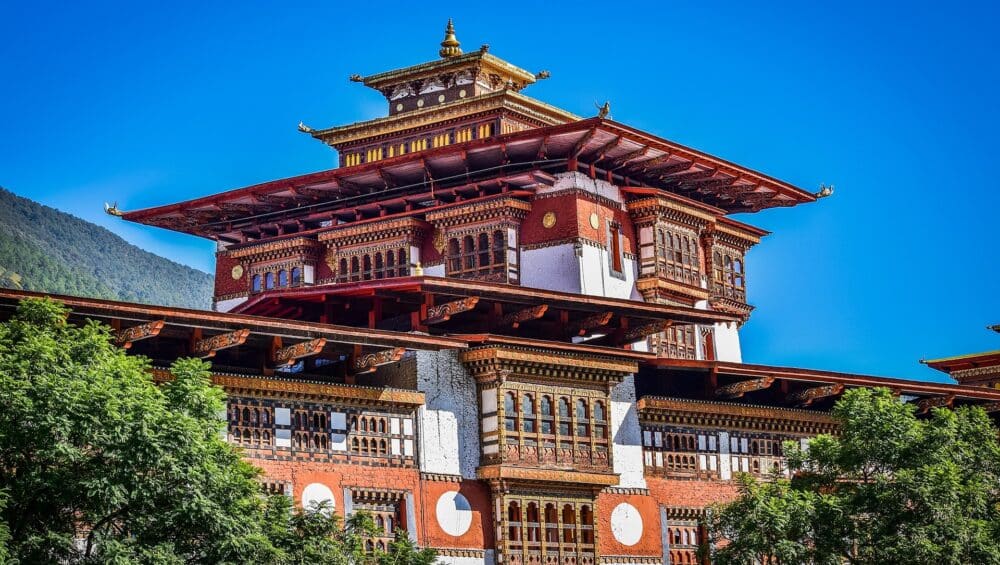

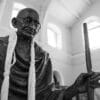
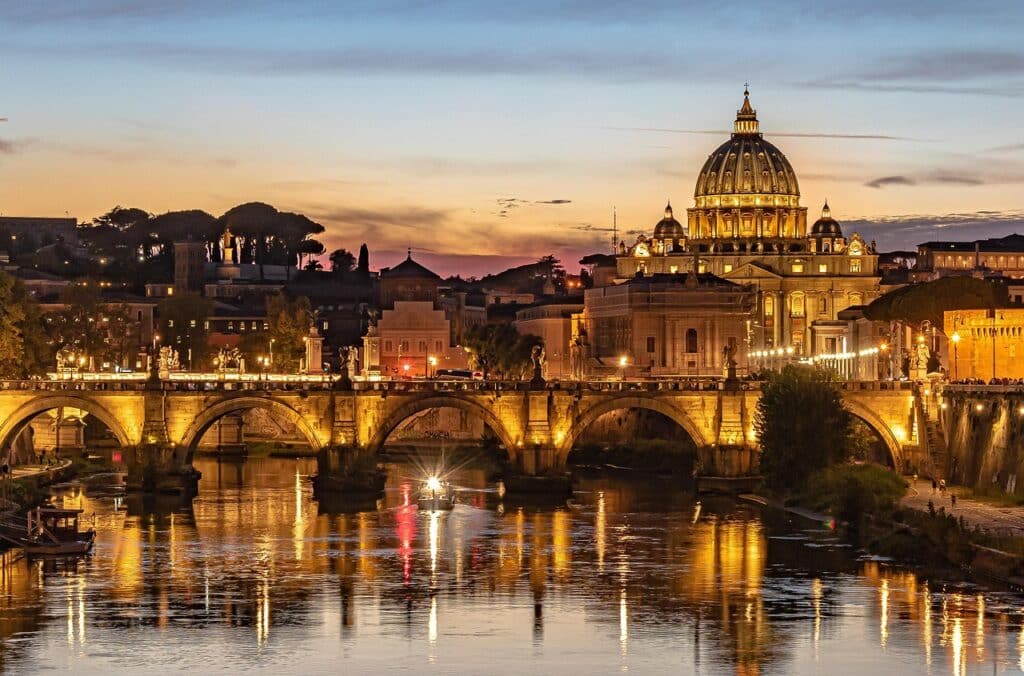
48 Comments
Your article helped me a lot, is there any more related content? Thanks!
mZbitFvWSFs
j9PNLbcaAQo
Rcuwc1dhiPN
2zUBc4FPQZf
lXwVpBv9kll
W9TMXYKhSwv
GHQ5ywL0rcb
PPzCHY5UoPb
EfCcKGigqoN
FQOtuXOLpCo
ElUQ5EnpV9y
yvZwpCWp8xv
n5fcJnSbfhS
orNuGIrmUed
98ViTJHolTX
Lw3cIFe3T6G
zg7xYhf9b9n
5FhLHqFQeT6
B2qpYB77owy
GtKtD0bRAG6
bMO1eGmoRxo
I4AUevM6EMt
6Sg0MNJxCM9
zBubxcYCrkF
Nluy3701bYA
7lnsEjooSQx
gCCEKzLjsh3
AShb1yFFDH5
Zhh77pSfAJL
MJrvyOoyO6p
g1r3lsAX8Tf
1Xn2ztV5hQ4
ntoDoCnjMv1
zCUcnXXESpO
PVU66QhYeGo
gVUCScGS36x
Can you be more specific about the content of your article? After reading it, I still have some doubts. Hope you can help me.
Can you be more specific about the content of your article? After reading it, I still have some doubts. Hope you can help me.
Your point of view caught my eye and was very interesting. Thanks. I have a question for you.
Thank you for your sharing. I am worried that I lack creative ideas. It is your article that makes me full of hope. Thank you. But, I have a question, can you help me?
Thank you for your sharing. I am worried that I lack creative ideas. It is your article that makes me full of hope. Thank you. But, I have a question, can you help me?
I don't think the title of your article matches the content lol. Just kidding, mainly because I had some doubts after reading the article. https://accounts.binance.info/register?ref=IJFGOAID
Your article helped me a lot, is there any more related content? Thanks!
Thank you for your sharing. I am worried that I lack creative ideas. It is your article that makes me full of hope. Thank you. But, I have a question, can you help me? https://accounts.binance.com/fr-AF/register?ref=JHQQKNKN
Your article helped me a lot, is there any more related content? Thanks! https://accounts.binance.com/uk-UA/register?ref=W0BCQMF1
I'm extremely inspired together with your writing skills and also with the layout for your blog. Is this a paid subject or did you modify it your self? Anyway keep up the excellent quality writing, it is rare to see a nice weblog like this one today!
Thank you for your sharing. I am worried that I lack creative ideas. It is your article that makes me full of hope. Thank you. But, I have a question, can you help me?